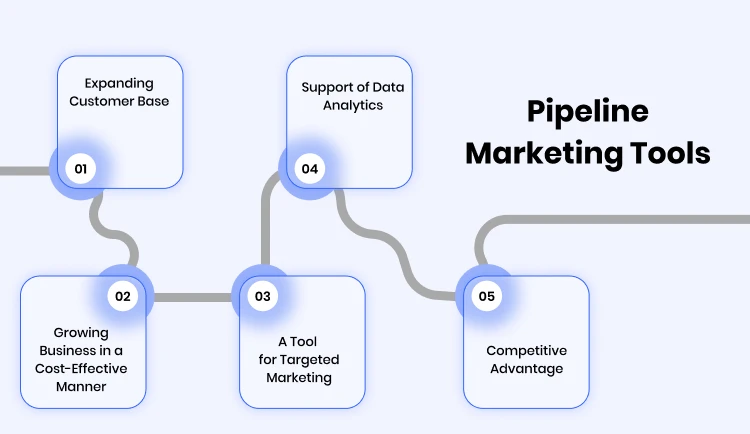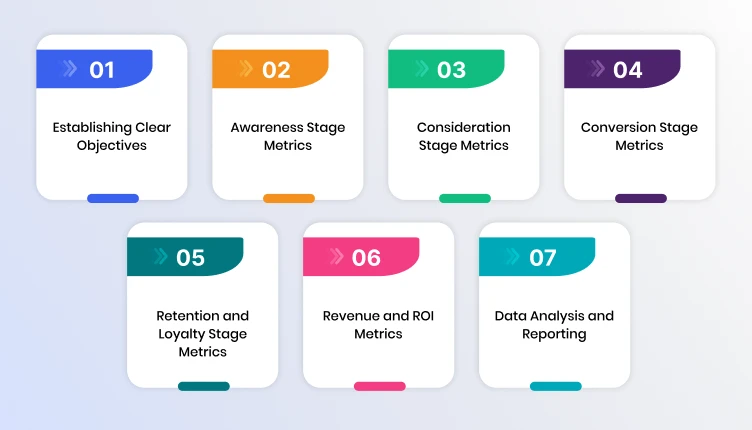Elevate Your Marketing Strategies: A Comprehensive Guide to Pipeline Metrics, Stages & Tools
Introduction
Hook: In today’s competitive digital environment, aligning marketing and sales teams is no longer optional—it’s essential. According to Forrester, companies with aligned sales and marketing functions experience 36% higher customer retention and 38% higher sales win rates.
Definition: Pipeline marketing is a data-driven strategy that unites marketing and sales teams to optimize the customer journey from awareness to conversion. Unlike traditional marketing that emphasizes lead generation alone, pipeline marketing focuses on nurturing leads, tracking conversions, and driving measurable revenue outcomes.
Difference Between Pipeline Marketing and Traditional Marketing: Traditional marketing casts a wide net to attract leads, often without a defined follow-up process. Pipeline marketing, however, ensures those leads are systematically nurtured and qualified through every stage of the sales funnel using performance metrics and marketing automation.
Thesis Statement: This blog will walk you through everything you need to know about pipeline marketing, including key metrics to track, pipeline stages to manage, and the best tools to execute a high-performance pipeline marketing strategy.
Understanding the Basics of Pipeline Metrics
What Are Pipeline Metrics?
Pipeline metrics are critical KPIs that measure the health, movement, and effectiveness of leads as they travel through your sales funnel. These indicators reveal what’s working, where leads are dropping off, and how marketing impacts revenue.
The Importance of Pipeline Metrics in Marketing
By measuring these metrics consistently, businesses can:
Identify bottlenecks in the sales process
Fine-tune marketing strategies for higher ROI
Improve sales forecasting accuracy
Align sales and marketing objectives
Key Performance Indicators for Tracking Pipeline Performance
Essential KPIs in pipeline marketing include:
Lead-to-customer conversion rate: Measures the percentage of leads that become customers.
Pipeline velocity: The speed at which leads move through the pipeline.
Sales cycle length: The average time it takes to close a deal.
Average deal size: The typical value of a closed sale.
Win rate: The ratio of closed deals to total opportunities.
Tracking these KPIs empowers businesses to predict revenue and optimize performance.
II.
Navigating Through Pipeline Stages
Introduction to Pipeline Stages
A well-structured pipeline ensures that leads are efficiently nurtured and qualified before being handed off to sales. Understanding each stage of the pipeline allows businesses to manage their prospects more effectively and boost overall conversion rates.
Defining and Understanding Each Pipeline Stage
The pipeline stages often include:
Lead Capture/Prospecting: Attracting leads through marketing efforts like ads, content, or social media.
Lead Qualification: Evaluating whether a lead fits your target customer profile.
Needs Analysis/Discovery: Understanding the lead’s pain points and needs.
Proposal Stage: Delivering a tailored solution or offer.
Negotiation and Commitment: Addressing objections and closing the deal.
Closed/Won or Lost: Finalizing the sale or archiving the lead.
Each stage demands unique messaging, timing, and strategy.
Best Practices for Moving Leads Through the Pipeline
Use lead scoring to prioritize follow-ups.
Implement personalized content based on the stage.
Maintain close collaboration between marketing and sales.
Monitor drop-off points and adjust strategy accordingly.
Essential Tools for Managing Pipeline Metrics
Overview of Pipeline Management Tools
Pipeline marketing is impossible to scale without the right tools. CRM and marketing automation platforms streamline the tracking, nurturing, and conversion of leads.
Top Pipeline Management Software and Platforms
Here are some of the best tools for managing pipeline metrics:
HubSpot CRM: Intuitive, all-in-one CRM with marketing automation features.
Salesforce Sales Cloud: Robust pipeline management and forecasting capabilities.
Pipedrive: Visual sales pipeline tool ideal for SMBs.
Zoho CRM: Cost-effective with customizable pipeline stages.
Freshsales: AI-powered CRM with built-in email and phone integration.
How to Choose the Right Tool for Your Marketing Needs
When choosing a pipeline marketing tool, consider:
Ease of integration with existing platforms
Budget and scalability
Reporting and dashboard customization
Automation and workflow capabilities
The right tool should empower both your marketing and sales teams to collaborate seamlessly.
Analyzing and Improving Pipeline Performance
Tracking and Analyzing Pipeline Metrics
Consistent analysis of pipeline metrics reveals actionable insights such as:
Which campaigns bring in the most qualified leads
Where prospects drop off
Which stages require better engagement
Data visualization dashboards and weekly review meetings can help interpret this information effectively.
Strategies for Improving Conversion Rates at Each Stage
To improve conversions, implement strategies like:
Personalized email workflows based on behavior
Retargeting ads to re-engage warm leads
Dynamic content tailored to lead interests
Time-based offers or incentives to speed up decisions
These approaches can push leads to the next stage and increase your close rate.
Implementing Changes Based on Pipeline Data
Once gaps are identified through metrics, apply adjustments such as:
Refining targeting criteria in ad campaigns
Rewriting lead nurturing email sequences
Enhancing sales enablement material
Reducing friction in the sales process
Continual iteration based on data will strengthen your pipeline over time.
IV.
Maximizing ROI with Effective Pipeline Management
The Relationship Between Pipeline Metrics and ROI
Pipeline metrics give you a direct line of sight into your marketing ROI. When properly tracked, they allow you to:
Forecast revenue more accurately
Allocate resources to high-performing campaigns
Reduce cost-per-acquisition (CPA)
Better insight = better ROI.
Using Pipeline Metrics to Optimize Marketing Strategies
Integrating pipeline data into your wider marketing strategy helps you:
Identify your highest-converting content types
Adjust keyword targeting based on sales outcomes
Align messaging with lead readiness
Reduce wasted ad spend
With a data-first approach, you can focus your efforts where they matter most.
Real-Life Examples of Companies Benefiting from Pipeline Metrics
Company A implemented HubSpot’s CRM and reduced their sales cycle by 30% by identifying where leads were stalling.
Company B used Pipedrive to boost their win rate by 22% after adjusting their email cadence based on stage-specific data.
Company C increased average deal size by 15% through targeted upsell strategies informed by lead scoring.
These real-world results prove that when used effectively, pipeline marketing drives measurable success.
Frequently Asked Questions
Pipeline metrics should be analyzed regularly to ensure that your marketing and sales strategies are on track and to make timely adjustments. A good practice is to conduct a thorough review at least once a month. This frequency allows you to:
- Identify trends and patterns over time.
- Quickly address any emerging issues or bottlenecks.
- Make data-driven decisions to optimize performance.
Effective pipeline management requires vigilance and strategic planning. Here are some common pitfalls to avoid:
- Lack of Alignment Between Sales and Marketing: Without close collaboration and communication, misalignment can lead to inefficiencies and missed opportunities.
- Ignoring Data-Driven Insights: Failing to utilize data to inform decisions can result in ineffective strategies and missed optimization opportunities.
- Neglecting Lead Nurturing: Leads that are not adequately nurtured can become cold or disengaged, reducing conversion rates.
- Overcomplicating the Pipeline: An overly complex pipeline can confuse teams and hinder performance. Keep stages clear and manageable.
- Inconsistent Follow-Up: Irregular or insufficient follow-up with leads can cause potential customers to lose interest or turn to competitors.
Yes, integrating pipeline metrics with other marketing strategies can significantly enhance overall effectiveness and outcomes. Here’s how:
- Content Marketing: Use metrics to identify which types of content are most effective at different stages of the pipeline and tailor your content strategy accordingly.
- Email Campaigns: Personalize email campaigns based on pipeline data to target leads more effectively and increase engagement.
- Social Media Marketing: Align social media efforts with insights from pipeline metrics to better target your audience and drive more qualified leads.
- SEO and Paid Advertising: Optimize keywords and ad spend based on performance data from your pipeline metrics to attract higher quality leads.
- Customer Retention Programs: Use insights from customer lifetime value and retention metrics to develop targeted retention strategies that enhance customer loyalty and advocacy.
Conclusion
In this comprehensive guide, we have explored the world of pipeline metrics, stages, and tools to help you take your marketing game to the next level. By understanding the basics, navigating through stages, utilizing essential tools, analyzing performance, and maximizing ROI, you can effectively enhance your marketing strategies and drive success for your business.
Remember, by mastering pipeline metrics, stages, and tools, you can elevate your marketing strategies and achieve success in today’s competitive business landscape. Start implementing these strategies today to maximize your ROI and drive sustainable growth for your business.


